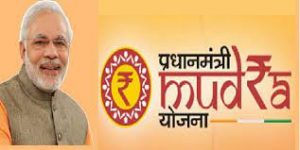Today Current Affairs:5th October 2022 for UPSC IAS exams, State PSC exams, SSC CGL, State SSC, RRB, Railways, Banking Exam & IBPS, etc
Table of Contents
Telecom Technology Development Fund (TTDF) Scheme:

The Universal Service Obligation Fund (USOF) launched the Telecom Technology Development Fund (TTDF) Scheme.
- Universal Service Obligation Fund (USOF) is a body under the Department of Telecommunications (DoT) to fund rural and remote digital connectivity.
- The Centre in the draft telecom bill, 2022 has said that the USOF, created under the Indian Telegraph Act of 1885, shall be referred to as the “Telecommunication Development Fund”.
- TTDF aims to fund R&D in rural-specific communication technology applications and form synergies among academia, start-ups, research institutes, and the industry to build and develop the telecom ecosystem.
- The scheme aims to promote technology ownership and indigenous manufacturing, create a culture of technology co-innovation, reduce imports, boost export opportunities and creation of Intellectual Property.
- Under the scheme, USOF is also targeting to develop standards to meet countrywide requirements and create the ecosystem for research, design, prototyping, use cases, pilots, and proof of concept testing, among others.
- The scheme entails grants to Indian entities to encourage and induct indigenous technologies tailor-made to meet domestic needs.
Pradhan Mantri Awas Yojana (Gramin):

According to the government data, 69% houses under PMAY in rural India are owned by women.
- Over 69% of houses constructed under the Prime Minister’s special housing scheme are either wholly or jointly owned by women in rural areas.
- As on September 29, 2022, a total of two crore houses had been constructed out of the 2.46 crore houses that were sanctioned.
- The Pradhan Mantri Awas Yojana (Gramin) was launched by the Prime Minister in 2016 with the aim of constructing 2.95 crore houses.
- Beneficiaries are identified using parameters from Socio-Economic and Caste Census (SECC) 2011 data and verified by Gram Sabhas.
- Concerned Ministry: Ministry of Rural Development.
Sapta Kosi High Dam Project:

India and Nepal have agreed to take forward the Sapta Kosi high dam project through further studies.
- Senior officials of the two sides have met and reviewed the bilateral water-sector cooperation, including the implementation of the Mahakali Treaty.
- Sapta Kosi High Dam is a multipurpose project proposed to be constructed on the Saptakoshi River of Nepal (Known as Kosi River in India).
- The project is primarily aimed to control floods in south-east Nepal and northern Bihar and to generate hydropower.
- The project will provide irrigation, control floods and generate 3,000 MW of electricity.
- The Mahakali Treaty was signed in 1996 over the integrated development of the Mahakali River, including Sarada Barrage, Tanakpur Barrage and Pancheshwar project.
- Mahakali River is also known as Sharda River or Kali Ganga in Uttarakhand.
- It joins Ghagra river in Uttar Pradesh, which is a tributary of Ganga.
Nobel Prize For Physiology:

Swedish scientist Svante Pääbo has been awarded the Nobel Prize for Physiology for the year 2022 “for his discoveries concerning the genomes of extinct hominins and human evolution”.
- He has spearheaded the development of new techniques that allowed researchers to compare the genome of modern humans and that of other hominins — the Neanderthals and Denisovans.
- He spent decades trying to extract DNA from 40,000-year-old bones, culminating in the unveiling of the Neanderthal genome in 2010.
- The research helped establish that modern humans and Neanderthals share a common ancestor that lived some 600,000 years ago.
- Paabo and his team also found genetic evidence that, during periods of coexistence, modern humans and Neanderthals had children together.
- His seminal research gave rise to an entirely new scientific discipline; paleogenomics.
- His research led to the understanding that archaic gene sequences from our extinct relatives influence the physiology of present-day humans.
- One such example is the Denisovan version of the gene EPAS1, which confers an advantage for survival at high altitude and is common among present-day Tibetans.
- Other examples are Neanderthal genes that affect our immune response to different types of infections.
World Habitat Day 2022:

The United Nations observes the first Monday of October as World Habitat Day.
- This year, World Habitat Day will be observed on October 3.
- Theme: “Mind the Gap. Leave No One and Place Behind”.
- It seeks to draw attention to the growing inequalities and vulnerabilities in cities and human settlements that have been exacerbated by the triple ‘C’ crises — COVID-19, climate and conflict.
- The day came into existence with a resolution by the UN General Assembly in 1985.
- World Habitat Day was first celebrated in 1986 in Nairobi, Kenya, with the theme ‘Shelter is my right’.
SASTRA Ramanujan Prize For 2022:

The SASTRA Ramanujan Prize for 2022 will be awarded to Yunqing Tang.
- Yunqing Tang is an Assistant Professor with the University of California, Berkeley, U.S.A.
- According to SASTRA Ramanujan Prize Committee Ms. Yunqing’s works display a remarkable combination of sophisticated techniques, in which the arithmetic and geometry of modular curves and of Shimura varieties play a central role, and her results and methods are bound to have major impact on future research in this area.
- The award, instituted by the Shanmugha Arts, Science, Technology & Research Academy (SASTRA) in 2005 with a cash prize of $10,000, is presented annually to individuals aged 32 and below, who made outstanding contributions in the field of mathematics, influenced by Srinivasa Ramanjuan in a broad sense.
Pradhan Mantri Mudra Yojana:

The disbursal of small business loans under Pradhan Mantri Mudra Yojana (PMMY) logged a record 30 per cent growth in the first half of the current fiscal ended September compared to the same period last year.
- It is a flagship scheme of the Ministry of Finance, Government of India, launched on 8th April, 2015.
- It is a Financial Inclusion (FI) programme in the country based on three pillars – Banking the Unbanked, Securing the Unsecured and Funding the Unfunded.
Types of loans:
- Shishu – Covering loans up to Rs 50,000;
- Kishor – Covering loans above Rs 50,000 and up to Rs 5 lakh;
- Tarun – Covering loans above Rs 5 lakh and up to Rs 10 lakh.
Eligibility:
- Any Indian Citizen who has a business plan for a non-farm sector income generating activities such as manufacturing, processing, trading or service sector.
- They can avail from all Public Sector Banks, Regional Rural Banks and Cooperative Banks, Private Sector Banks, Foreign Banks, Micro Finance Institutions (MFI) and Non-Banking Finance Companies (NBFC) up to Rs 10 lakhs Micro Units Development & Refinance Agency Ltd. (MUDRA) loans under PMMY.




